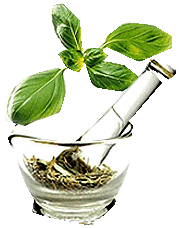Ayur Vastra
» Technology
Technology
 Court
physicians of Travancore palace made this formulation many years ago.
Some families of Kerala's Shaliyar weaving community provided clothes
dyed in herbs to the royal family. The Ayurvedic herbs are boiled
at a particular temperature and the fabric is dipped in it for at
least four hours and, in some cases, a whole day. In the case of weaving
sandalwood sarees, first the yarn and then the cloth is dyed in sandalwood
oil. Court
physicians of Travancore palace made this formulation many years ago.
Some families of Kerala's Shaliyar weaving community provided clothes
dyed in herbs to the royal family. The Ayurvedic herbs are boiled
at a particular temperature and the fabric is dipped in it for at
least four hours and, in some cases, a whole day. In the case of weaving
sandalwood sarees, first the yarn and then the cloth is dyed in sandalwood
oil.
The process of Ayurvastra starts with the 100% pure organic cotton
that has been hand loomed. The cloth passes through several stages
of treatment before becoming colourful and ready to wear. No machine
processing is involved in the making of Ayurvastra. More importantly,
no chemical additives are added to prepare the cotton fibres for
spinning and weaving and no chemical finishes are applied to enhance
its appearance.
Every step in the preparation of Ayurvastra cloth and clothing
is carefully and precisely controlled. The process of herbal dyeing
was developed through extensive research during the age old dyeing
methods practiced since the days of the Indus Civilization (2500
BC). Some of the rare herbs are procured from Agasthya forests of
Western Ghats by the tribal community. Needless to say, around 1200
weavers and tribals are involved in this project.
 Around
200 herbs are used for making various types of ayurvastra. Each
Kashayas for Ayurvastra cloth typically contain between
40 and 60 specifically blended and carefully prepared medicinal
herbs, plants, flowers, roots and barks. The examples for these
medicines are Salaparni (Gmelina
Arborea), Dadima (Punica Granatum), Amalaki (Emblica
Officinalis), Khair (Accacia Catechu), Haldi (Curcuma
Longa), Kesar (Saffron/ Crocus Sativus), Sappan
(Caesalpinia Sappan), Mahabharivacha (Alpinia Galanga),
Aranika (Premina Latifolia Roxb), Adhapuspi (Trichodesma
Indicum), Yavani (Trachyspermum Ammi), Agar (Aquilaria
Agallocha Roxb), Tirucalli (Euphorbia Tirucalli), Irumullu
(Xylia Xylocarpa), Rui (Calatropis Gigautea), Ashwagandha
(Withania Somnifera), Bodhi (Ficus Religiousu), Gandha-unakuli
(Aristolochia Indica), Sugandhimoola (Vetiveria Zizanioides),
Amaltas (Cassia Fistula ), Kakamachi (Solanum
Nigrum ), Ajagandhi (Ocimum Basilicum), Chirabilva
(Pongamia Pinnata), Shalparni (Desmodium Gangeticum), Chandana
(Santalum Album ), Raktha Chandana (Sanicula Marilandica),
Pathimukham ( Caesalpinia Sapans), Dadhiphala
(Feronia Elephantum ), Tulsi (Ocimum Sanctum), Karanja
(Derris Indica), Aksaphala (Drypetes Roxburghi), Chakramarda
(Cassia Tora), Gammalu Aratu (Pterocarpus Marsupium ),
Akschota (Jasminum Grandiflorum), Harra (Embelic
Myrabolam), Gulgulu (Commiphora Mukul), Neem (Azadirachta
Indica ), Jatamansi (Nerium Indicum), Chirtamutti (Pavonia
Zeylanica), Aratta (Alpinia Calcarata ), Patavalli
(Cyclea Peltata), Akil (Aquilaria Agallocha), Chikha-mula
(Solanum Surattense), Shuddha Gairika (Strychnos Nux-vomica),
Brhatphala (Benincasa Hispida ), Kewda (Pandanus Odoratissimus),
Nirmali (Strychnos Potatorum ), Henna Leaf (Lawsonia
Inermis), Manjistha (Rubia Cordifolia), Nagvalli
(Piper Betle) etc. Around
200 herbs are used for making various types of ayurvastra. Each
Kashayas for Ayurvastra cloth typically contain between
40 and 60 specifically blended and carefully prepared medicinal
herbs, plants, flowers, roots and barks. The examples for these
medicines are Salaparni (Gmelina
Arborea), Dadima (Punica Granatum), Amalaki (Emblica
Officinalis), Khair (Accacia Catechu), Haldi (Curcuma
Longa), Kesar (Saffron/ Crocus Sativus), Sappan
(Caesalpinia Sappan), Mahabharivacha (Alpinia Galanga),
Aranika (Premina Latifolia Roxb), Adhapuspi (Trichodesma
Indicum), Yavani (Trachyspermum Ammi), Agar (Aquilaria
Agallocha Roxb), Tirucalli (Euphorbia Tirucalli), Irumullu
(Xylia Xylocarpa), Rui (Calatropis Gigautea), Ashwagandha
(Withania Somnifera), Bodhi (Ficus Religiousu), Gandha-unakuli
(Aristolochia Indica), Sugandhimoola (Vetiveria Zizanioides),
Amaltas (Cassia Fistula ), Kakamachi (Solanum
Nigrum ), Ajagandhi (Ocimum Basilicum), Chirabilva
(Pongamia Pinnata), Shalparni (Desmodium Gangeticum), Chandana
(Santalum Album ), Raktha Chandana (Sanicula Marilandica),
Pathimukham ( Caesalpinia Sapans), Dadhiphala
(Feronia Elephantum ), Tulsi (Ocimum Sanctum), Karanja
(Derris Indica), Aksaphala (Drypetes Roxburghi), Chakramarda
(Cassia Tora), Gammalu Aratu (Pterocarpus Marsupium ),
Akschota (Jasminum Grandiflorum), Harra (Embelic
Myrabolam), Gulgulu (Commiphora Mukul), Neem (Azadirachta
Indica ), Jatamansi (Nerium Indicum), Chirtamutti (Pavonia
Zeylanica), Aratta (Alpinia Calcarata ), Patavalli
(Cyclea Peltata), Akil (Aquilaria Agallocha), Chikha-mula
(Solanum Surattense), Shuddha Gairika (Strychnos Nux-vomica),
Brhatphala (Benincasa Hispida ), Kewda (Pandanus Odoratissimus),
Nirmali (Strychnos Potatorum ), Henna Leaf (Lawsonia
Inermis), Manjistha (Rubia Cordifolia), Nagvalli
(Piper Betle) etc.

|